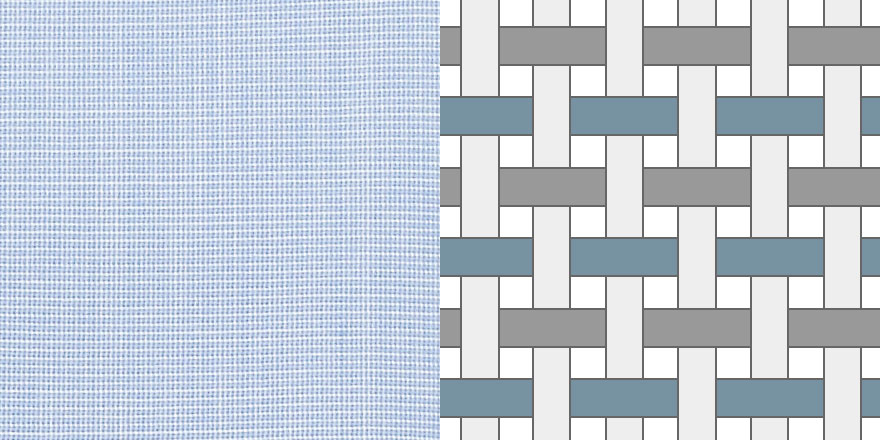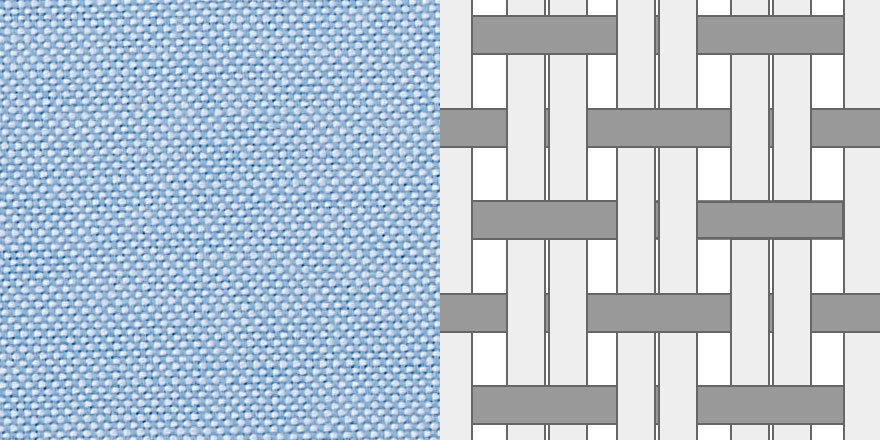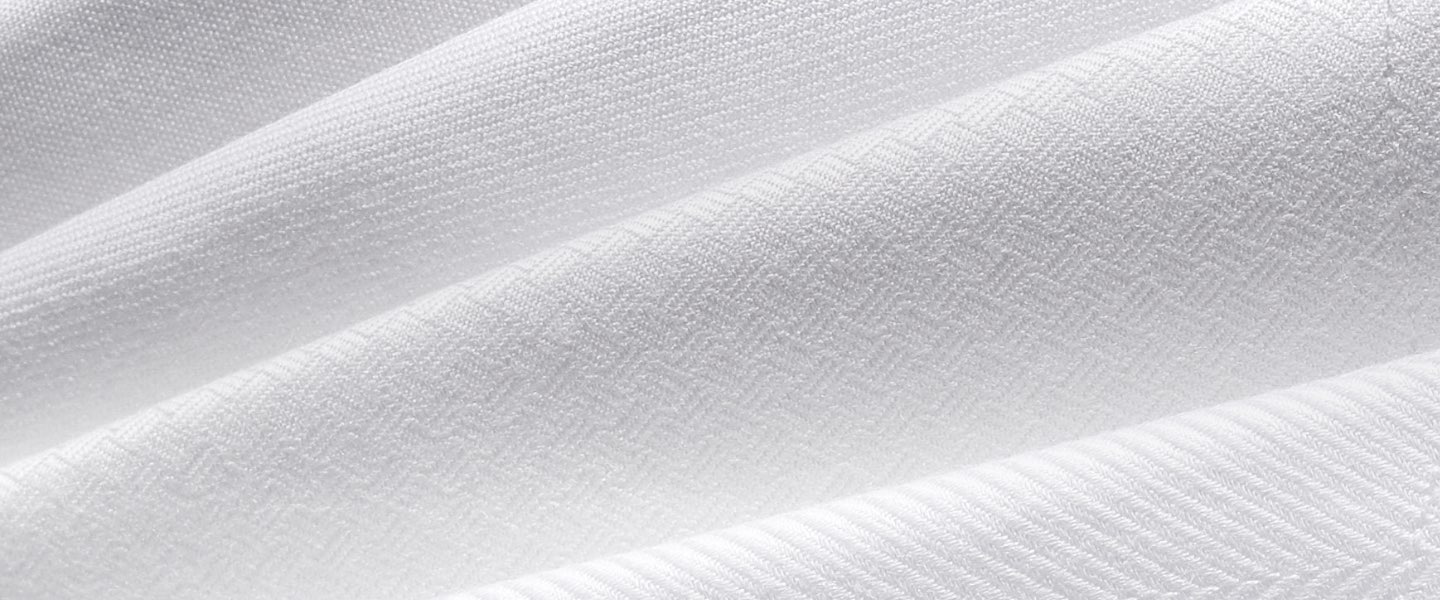Poplin and twill are two types of fabric commonly used in clothing. Poplin is a lightweight, plain weave fabric while twill is a heavier, diagonal weave fabric.
Poplin and twill are two of the most popular fabrics used for clothing. Poplin is a lightweight, smooth fabric with a plain weave. It is commonly used for dress shirts, blouses, and summer wear. Twill, on the other hand, is a heavier fabric with a diagonal weave.
It is commonly used for workwear, jackets, and pants. While both fabrics have their unique characteristics, they are both durable and easy to care for. We will explore the differences between poplin and twill and their common uses in clothing.

Credit: savilerowco.com
Table of Contents
Characteristics Of Poplin
Poplin is a lightweight, plain-woven fabric known for its smooth texture and fine ribbed pattern. It is made from a blend of cotton and polyester, offering a durable and wrinkle-resistant quality. In contrast, twill fabric has a diagonal weave, providing a more textured and durable finish compared to poplin.
Poplin is a plain weave fabric that is tightly woven with a ribbed texture, making it a popular choice for dress shirts, skirts, and lightweight jackets. It is made from 100% cotton or cotton blend, and its characteristics make it a versatile and durable fabric. Let’s take a closer look at the characteristics of poplin.Smooth Texture
Poplin has a smooth and silky texture, making it comfortable to wear all day long. The tight weave of the fabric gives it a luxurious finish, making it suitable for formal wear. The smooth texture also makes it easy to embroider or print on, making it a popular choice for custom shirts and uniforms.Lightweight And Breathable
Poplin is a lightweight fabric that is perfect for warm weather. The breathable nature of the fabric allows air to circulate freely, making it comfortable to wear even on the hottest days. Poplin is also an excellent choice for travel because it is lightweight and easy to pack.Durable And Wrinkle-resistant
Poplin is a durable and wrinkle-resistant fabric that can withstand wear and tear. The tight weave of the fabric prevents it from snagging or tearing easily. Poplin is also wrinkle-resistant, making it easy to maintain. It does not require a lot of ironing, making it a great choice for people who want to look polished without spending a lot of time on their clothes. In conclusion, poplin is a versatile fabric that has a smooth texture, is lightweight and breathable, and is durable and wrinkle-resistant. It is an excellent choice for dress shirts, skirts, and lightweight jackets, and is perfect for warm weather and travel.
Credit: savilerowco.com
Characteristics Of Twill
Twill fabric is known for its diagonal weave pattern, giving it a durable and textured appearance. It is often used for making denim and chino pants due to its strength and resistance to wrinkles. Twill fabric is more substantial than poplin and has a distinctive look and feel.
Twill is a type of fabric that is known for its unique diagonal weave pattern. This weaving technique is what sets twill apart from other fabrics like poplin. Twill is a popular choice for clothing and home decor due to its durability, softness, and unique texture.Diagonal Weave
The diagonal weave of twill is created by passing the weft thread over one or more warp threads before going under two or more. This creates a distinct diagonal pattern on the fabric surface that is easily recognizable. The diagonal pattern also gives twill fabric a unique texture that is different from other fabrics like poplin.Durable And Sturdy
Twill fabric is known for its durability and sturdiness. This is due to the weaving technique used to create the fabric. The diagonal pattern creates a strong and sturdy fabric that can withstand wear and tear better than other fabrics. It is also less prone to wrinkles and creases, making it a popular choice for clothing that needs to look sharp and polished.Soft And Comfortable
Despite its sturdiness, twill fabric is also soft and comfortable to wear. It has a smooth texture that feels nice against the skin. Twill is also breathable, which makes it a popular choice for summer clothing. The softness and comfort of twill make it a great fabric for casual clothing like jeans, shorts, and skirts. In summary, twill fabric is known for its unique diagonal weave pattern, durability, sturdiness, softness, and comfort. These characteristics make it a popular choice for clothing and home decor.Poplin Vs Twill: Key Differences
In the world of fabrics, two popular options that often get compared are poplin and twill. While both fabrics have their unique characteristics, understanding the key differences between them can help you make an informed decision when choosing the right fabric for your needs. Let’s take a closer look at the weave structure, texture and appearance, strength and durability, as well as comfort and breathability of poplin and twill.
Weave Structure
Poplin and twill differ in their weave structures. Poplin fabric is woven using a simple over-under weave, with the weft yarn going over one warp yarn and then under the next, creating a smooth, plain surface. On the other hand, twill fabric is woven using a diagonal pattern, where the weft yarn passes over multiple warp yarns before going under, resulting in a distinctive diagonal line or ridge pattern on the surface.
Texture And Appearance
When it comes to texture and appearance, poplin and twill have noticeable differences. Poplin fabric has a smooth, flat surface with a slight sheen, giving it an elegant and polished look. It is lightweight and drapes well, making it ideal for dress shirts and blouses. Twill fabric, on the other hand, has a more textured and pronounced diagonal pattern, which gives it a more casual and rugged appearance. It is commonly used for pants, jeans, and workwear.
Strength And Durability
In terms of strength and durability, twill fabric takes the lead. The diagonal weaving pattern in twill makes it inherently stronger and more resistant to tearing compared to poplin. This makes twill fabric a popular choice for items that require durability and longevity, such as outerwear, upholstery, and heavy-duty work clothing. Poplin, while not as strong as twill, still offers sufficient durability for lighter garments and everyday wear.
Comfort And Breathability
When it comes to comfort and breathability, poplin fabric has the advantage. Its smooth and lightweight nature allows for better air circulation, making it more breathable and comfortable to wear, especially in warmer climates. Twill fabric, with its thicker and more textured weave, may be less breathable but offers better insulation and warmth, making it suitable for cooler weather.

Credit: www.charlestyrwhitt.com
Frequently Asked Questions
Is Poplin Or Twill More Formal?
Poplin is more formal than twill due to its smooth and lightweight texture, making it suitable for formal occasions. Twill, on the other hand, has a diagonal weave that gives it a more casual appearance.
Is Poplin Fabric See Through?
Poplin fabric is not see through. It is a tightly woven cotton or cotton blend fabric that provides opacity.
What Is The Difference Between Twill And Poplin Pants?
Twill pants have a diagonal weave pattern, while poplin pants have a plain weave pattern. Twill is more durable and has a softer feel, while poplin is lighter and more breathable. Twill also tends to wrinkle less than poplin.
Are Twill Shirts Good For Summer?
Yes, twill shirts are suitable for summer as they are lightweight, breathable, and moisture-wicking. The twill weave allows air to circulate, keeping you cool and comfortable in hot weather. Additionally, twill shirts are durable and easy to maintain, making them a great choice for summer wear.
Conclusion
To sum up, both poplin and twill fabrics offer unique characteristics and are widely used in various industries. Poplin’s smooth and lightweight texture makes it a popular choice for shirts and dresses, while twill’s durability and versatility make it ideal for pants and jackets.
Whether you’re looking for a crisp and formal appearance or a sturdy and practical fabric, understanding the differences between poplin and twill can help you make an informed decision for your next project.
